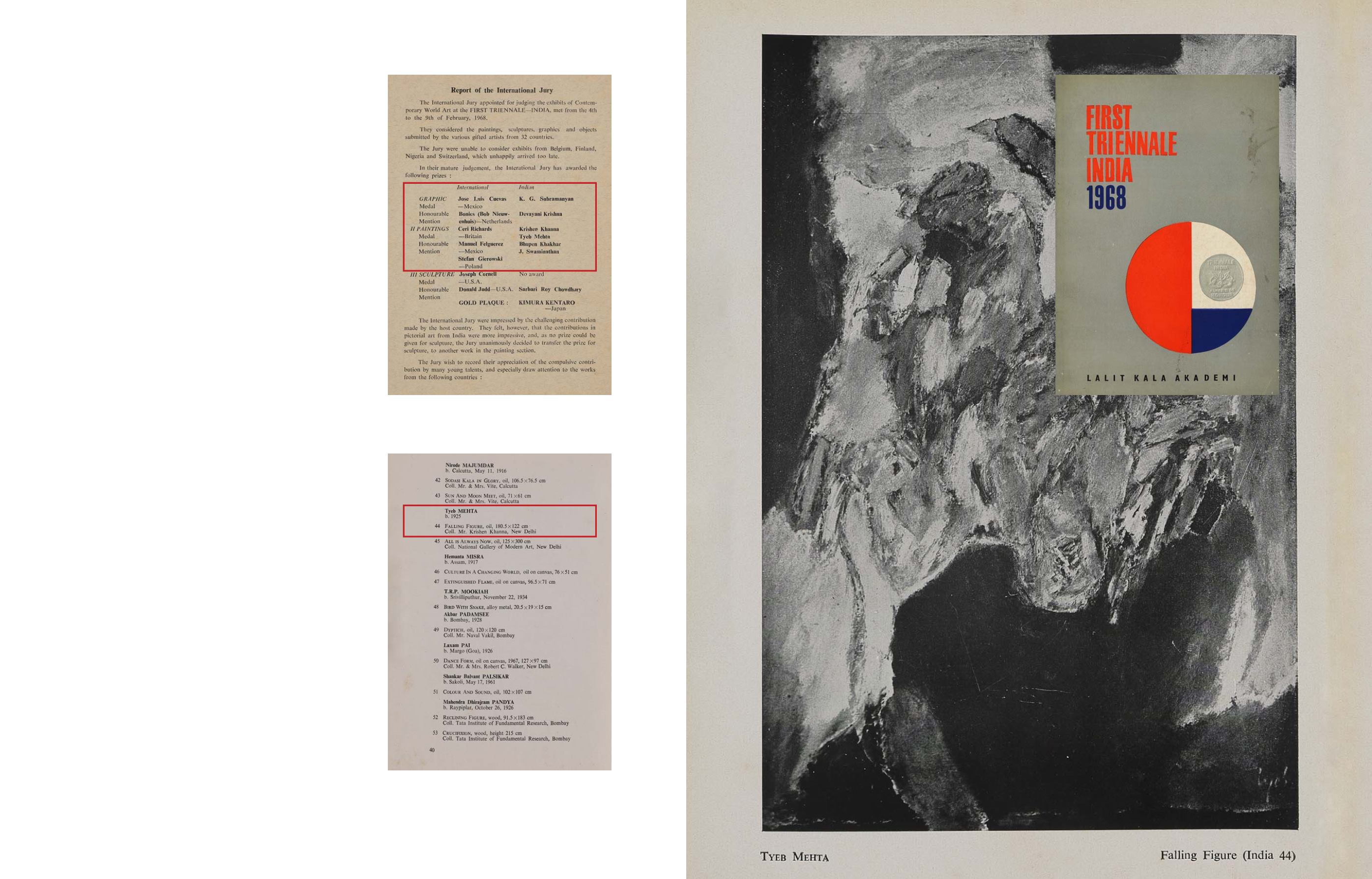

86
87
In 1965, Mehta had moved to Delhi, where he became reacquainted with his old friends, Krishen Khanna and
theatre director Ebrahim Elkazi. The present lot was acquired by Khanna, soon after it was painted by Tyeb
in 1965. Recognising in it an innate power and intensity, Khanna entered the painting into the First Triennale
of Contemporary World Art in New Delhi in 1968, while Tyeb was away on a Rockefeller fellowship in New
York. He was delighted when the painting won one of the two gold medal award winning works in the Indian
section of the Triennale. Khanna’s own painting titled
Rider
was the recipient of the other gold medal.
Mehta’s life was indelibly marked by the Partition. The
sectarian violence remained the underlying element in his
oeuvre. The powerful bull, the lone trapped rickshaw puller,
falling birds and figures, as well as the goddesses Kali and
Durga, are all used to express his feeling of bewilderment
and anguish about the violence he encountered. The
present lot, painted in 1965, is the earliest of the iconic
Falling Figure series that Mehta began in the mid‒1960s.
In this seminal work, Mehta combines two subjects that
he returned to throughout his career – the rickshaw
puller and here used for the first time – the Falling Figure.
Mehta’s Falling Figure series of paintings are compositions
of fractured planes, distorted limbs and agonised faces,
falling into an undefined abyss. “In Tyeb’s paintings, the
figure is the bearer of all drama, momentum and crisis, a
detonation against the ground it occupies and commands;
by contrast, the field appears, at first sight, to be all flattened
colour, a series of bland, featureless planes that impede the
manifestation of the figure, or even fragment the figure into
intriguing shards. Only gradually does the eye, unpuzzling
the painting, recognise that Tyeb treats figure and field as
interlocked and not separate entities. His paintings derive
their enigmatic compound of shock and coolness, anguish
and elegance, from the complex interweave of these
elements.” (Hoskote, et al. p. 4)
In its depiction of reigned in violence, the painting evokes
the notion of the Absurd, conveying a fundamental sense
of disharmony which was so urgently explored by artists
and writers in the post‒war climate of Europe. It was only
logical that Mehta, who shared similar struggles with the
self, would be drawn to this philosophy in his art. In
Ideas
Images Exchanges
, poet and art critic Dilip Chitre cites
a review of Mehta’s early Falling Figures: “...in the simple
act of falling, Tyeb takes us on into a metaphysical riddle.
The falling is vertiginous; and metaphorically expresses
man’s freedom in the very act of infinite questing. It is the
adventure of floating alone on a sea of awareness, or getting
sucked, unresisting, down its velvet vortices.” (
The Link
, 20
February 1966)
Mehta’s pared down minimalism, serene use of light
paint and even lighter brushwork creates a disturbing
juxtaposition with the trauma that is the subject of his
work. A sense of unease and disorientation results from
this unlikely pairing of serene beauty and violence, which
defines Mehta’s art.
A list of participants from India, including Tyeb Mehta, in the Triennale.
Facing page: Present lot published in
First Triennale India 1968
, New Delhi:
Lalit Kala Akademi, 1968.
Report by the international jury of the First Triennale of Contemporary
World Art listing Tyeb Mehta as one of the two gold medal award
winners, for
Falling Figure
.


















